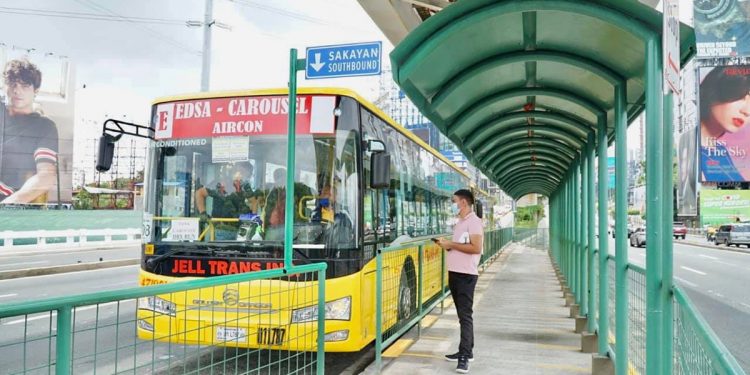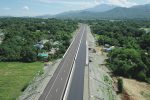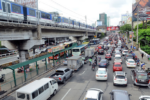DOTr does “Safety, Data, and Green” for public transport

The Department of Transportation (DOTr) fully agrees with the statement of ADB President Masatsugu Asakawa that, “The transport sector must emerge from the coronavirus disease 2019 (COVID-19) pandemic as a driver of sustainable growth with three critical factors in mind—SDG, which in this case stands for ‘Safety, Data, and Green.’ “
In a startement, the DOTr said this is what they have been doing in the past six (6) months, as the country continues to counter the impact of the global health concern.
It said in the Philippines, the potential of the transport system as a transmission vector of COVID-19 is a prevailing threat that cannot be ignored. “However, as the lifeblood of the economy, the transport system cannot remain at a standstill. It must continue, taking into consideration the need to balance opening up the economy and, at the same time, protecting the people from the life-threatening disease. Thus, this involves changing practices and developing new ways of doing business. This involves ushering in the “new normal” in the country,” the statement continues.
The DOTr has taken various initiatives as ways forward. Technology-driven initiatives are now taking center stage in the fight against the pandemic. Agencies under the DOTr are introducing technology-based and data-driven innovations in the conduct of processes to decrease face-to-face transactions, reduce processing time, provide more efficient and quality service, and at the same time, eradicate opportunities for corrupt practices.
These include the shift to electronic and/or contactless payment systems such as Automated Fare Collection System (AFCS) and RFID tags in tollways; online processing of transactions; electronic booking and ticketing; use of Artificial Intelligence (AI); and online contact tracing, among others.
In the road transport sector, the DOTr is actively promoting the public utility vehicle modernization program (PUVMP). We now see transport operators consolidating and taking up rationalized routes with established dedicated median lanes that have buses run on regular, fleet-managed schedule with established stringent health and safety protocols. These measures redound to hefty profits for operators and drivers due to faster turn-around time, and safer, more convenient commuting for passengers.
While technology is being tapped, there is also a need to go back to the basics. Thus, the DOTr is pushing for active transport such as walking, biking and use of other non-motorized transport to, not only maintain the lowered-levels of air pollution gained from the months of quarantine, but also to encourage physical fitness that boosts immunity against COVID-19.
To encourage biking, the DOTr, in partnership with the MMDA, DOH, and DPWH, is expediently establishing protected bike lanes to connect major roads, residential areas, and high-volume commuter areas to major medical facilities. In Manila City and Quezon City, a network has been instituted to make hospitals more accessible, especially for frontliners.
The DOTr will also develop pedestrian facilities around key rail stations to encourage walking as an active transport. Through the EDSA Greenways Project, covered and elevated walkways leading to/from the rail stations and nearby land uses will be built. Phase 1 includes the stations in Balintawak, Cubao, Guadalupe, and Taft.
The COVID-19 pandemic also highlighted the detrimental effect of the decades-long backlog in our nation’s transport infrastructure, and the critical importance for the DOTr to step-up the completion of projects that would have helped in stopping the spread of the disease through the sector if they have been implemented.
For decades, the Philippines has functioned on a total of 77 kilometers of operational railways. The government is now fast tracking the long-delayed expansion of the country’s rail network to 1,900 kilometers to benefit around 4.5 million passengers daily. To date, 6 railway projects are ongoing, one for rehabilitation and 6 more are due for construction.
For instance, had the Metro Manila Subway Project (MMSP), (a subway network for Metro Manila was first conceived in the 1970s), LRT-1 Cavite Extension (approved by NEDA in 2000), and MRT-7 Project (submitted to DOTr in 2002) been implemented earlier, our capital’s railway network would have had more capacity and reach to transport more people now even with physical distancing and health and safety measures being observed. Now, the MMSP’s overall design, right-of-way acquisition, procurement, and construction progress is at 17.26%, LRT-1 Cavite Extension is at 47.77%, and MRT-7 is at 58.94% as of 15 July 2020.
Another example is the MRT-3, wherein, had it not been for poor maintenance practices of the past, MRT-3’s capacity would not have decreased. Now, because of the Duterte Administration’s BBB Program, a comprehensive rehabilitation of MRT-3 by a highly experienced and technically qualified provider is not only underway but even ahead of schedule. Soon, the rail line will be able to once again transport more people despite the imposed community quarantine that requires observance of physical distancing and other health and safety measures.
The LRT-Line 1 Extension to Cavite, the LRT Line 2 Extension to Masinag, the Common Station, the North-South Commuter Rail, the PNR Bicol Railway Project and the Mindanao Railway Project are progressing well despite COVID restrictions.
The DOTr is pushing airport development projects as well. The construction of the Bicol International Airport is more than halfway complete. The proposed Bulacan International Airport is expected to be operational within 4 to 6 years from the target start of construction this year. To complement the operations of the NAIA, a new Passenger Terminal Building is being built at the Clark International Airport (CRK) and will become operational by January 2020.
As we work on decongesting NAIA, rehabilitation works continue for its Terminal 2. One of the solutions seen to decongest NAIA, the Sangley Airport was inaugurated on February 15, 2020 and was completed ahead of its schedule.
To boost maritime connectivity and mobility nationwide, the Duterte administration has completed a total of 369 commercial and social tourism port projects, with 108 projects in various stages of construction, and 76 are for implementation. These port projects are vital links to spur new local growth areas for tourism, trade, and logistics.
For the road sector, aside from the PITX, two (2) more intermodal terminals will be built. These are the Taguig City Integrated Terminal Exchange (TCITX) and the North Integrated Terminal Exchange (NITX).
“Safety, Data, and Green.” These are concepts incorporated in the Department’s way forward as we lead the transport sector.






